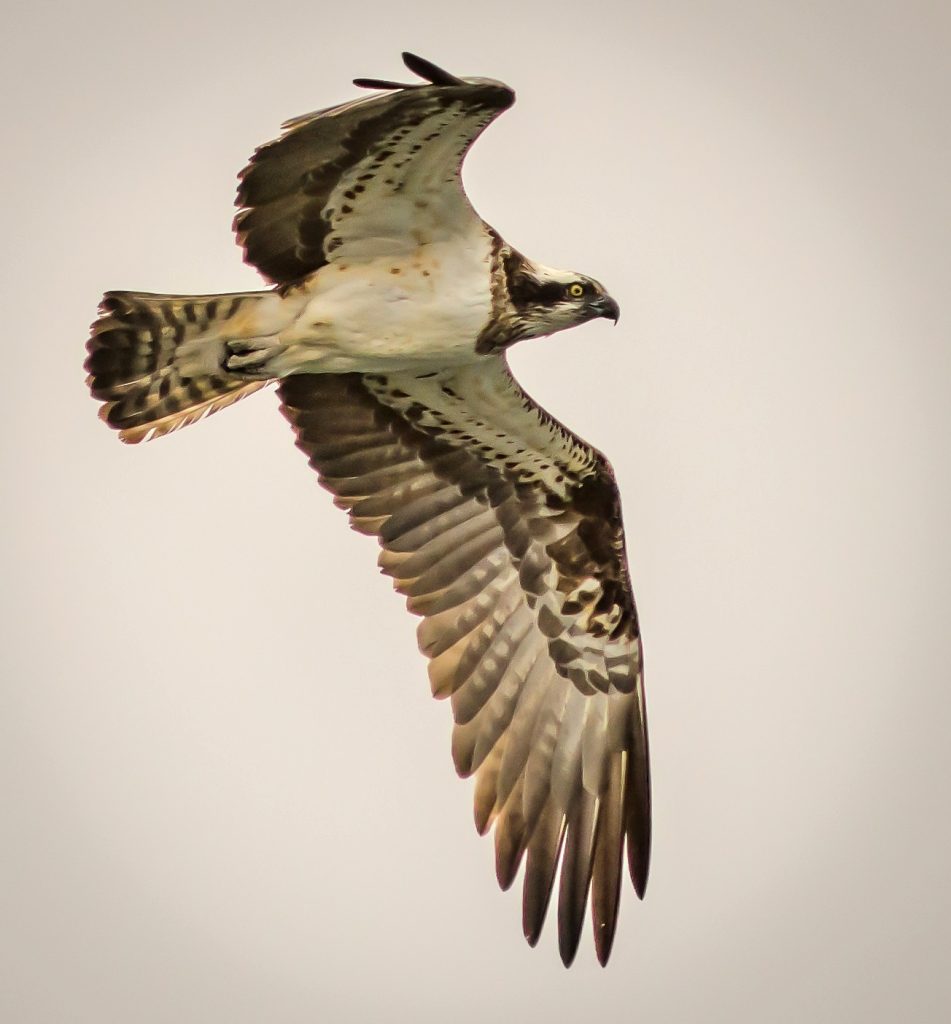As the summer draws to a close and autumn starts to creep in we may be starting to feel energy levels ebbing and a little lethargic. However, some of the natural world are undertaking some amazing journeys!
In early September at Panshanger Park visitors are sometimes lucky enough to see the site’s most famous migrant – the osprey. This bird of prey feeds solely on fish and the lure of the Panshanger lakes beckon as a good feeding stop on its migration southwards back to West Africa. Ospreys are rare in the UK with only about 400 breeding pairs. Each spring they migrate over 5000km to visit their breeding grounds in the UK. At the end of the summer, they undertake the reverse journey!
Other summer migrants to whom we have recently bid adieu are the swallows who, unlike the solitary ospreys, start to group together in readiness for their journey back south. Swallows have an even longer migration down to South Africa which is about 10000km! An arduous journey for such a small bird.

The magnificent osprey keeping an eye out for fish in the lakes at Panshanger Park ©Allan Burrows
Some bats species also migrate – whilst some hibernate through the cold winters others, such as the Nathusius’ pipistrelle bats fly as far as Eastern Europe.
Perhaps most amazingly of all are the butterfly migrations. Red admirals and painted lady butterflies are seen throughout the summer season at Panshanger but around now the red admiral take to the skies and head towards southern Europe. For a butterfly weighing only a gram, this is quite a challenging journey having to negotiate storms and predators, such as birds, whilst keeping energy levels topped up along the way.
The journey of the painted lady is even more ambitious in its migration – they can migrate up to 9000km from the Arctic circle to Africa. This journey is too much for one individual to undertake so it is up to successive generations to carry on. One whole migration can take up to six generations of painted lady butterflies – equivalent to us finishing a journey that our great-great-great-grandparents started!
Many creatures migrate to avoid harsh winter weather conditions, find optimal breeding sites and better seasonal food sources. In the coming months, Panshanger will be welcoming back the winter migrants such as the wildfowl.
If you would be interested in helping with conservation work or events within the park more information can be found at panshangerpark.tarmac.com/volunteering/
Jo Whitaker is the Panshanger Park People and Wildlife Officer.
Jo works for Herts and Middlesex Wildlife Trust and her role is funded by Tarmac.
Header image: Painted lady butterflies undertake a long migration- flying at heights of up to 500m high and speeds of 30mph! ©Josh Kubale


